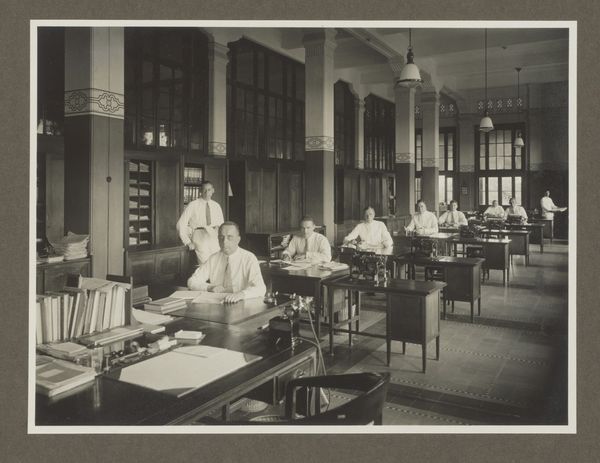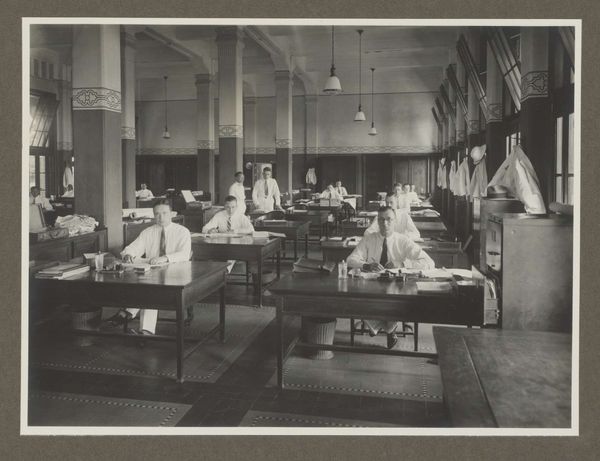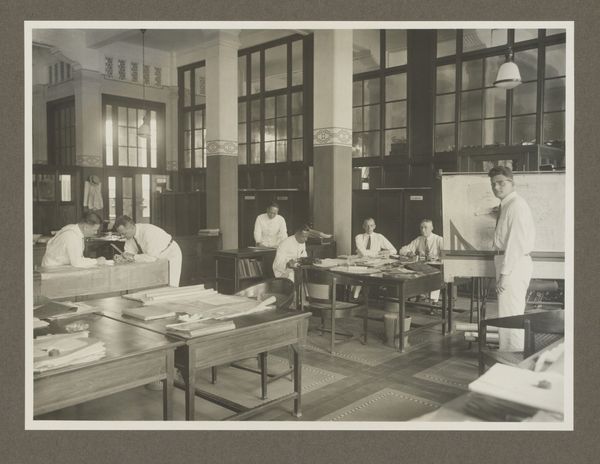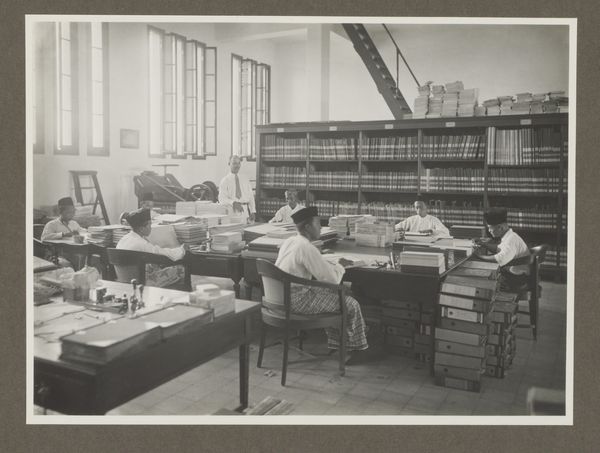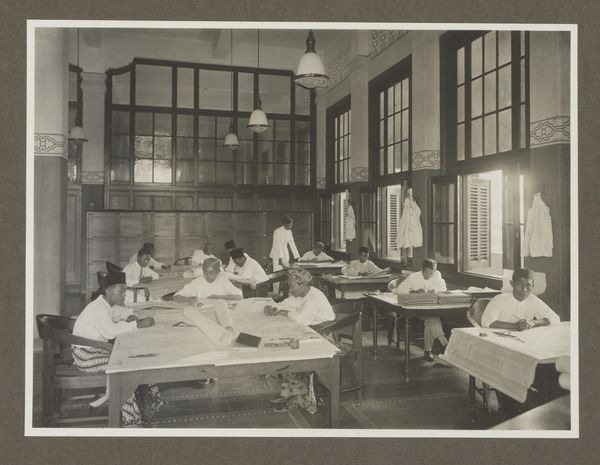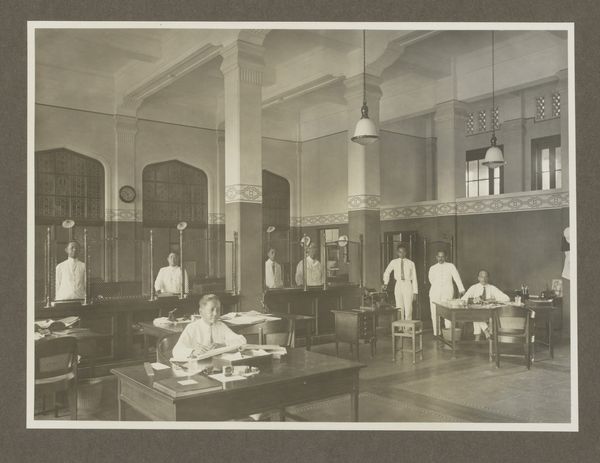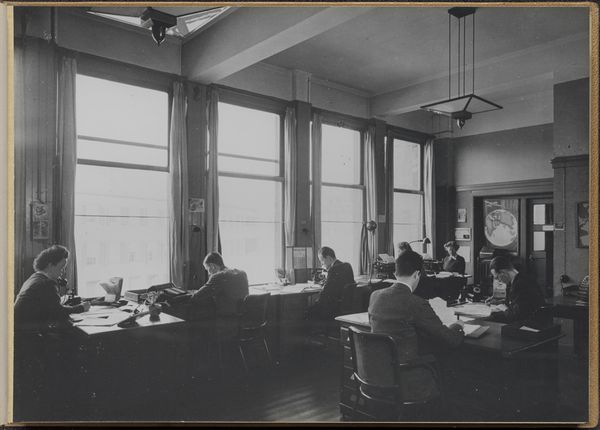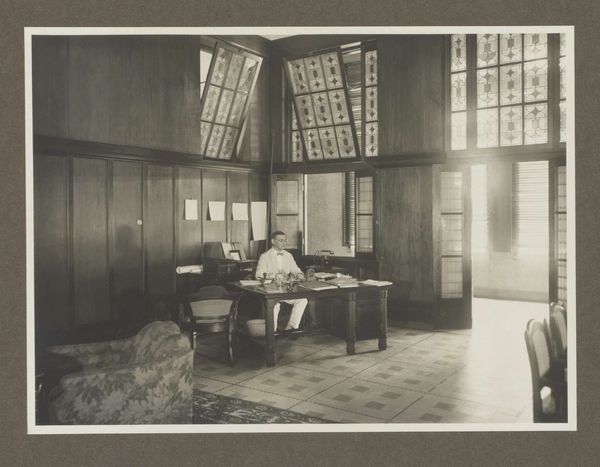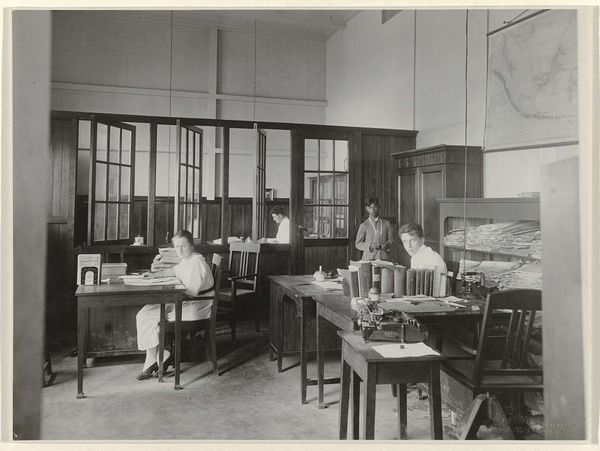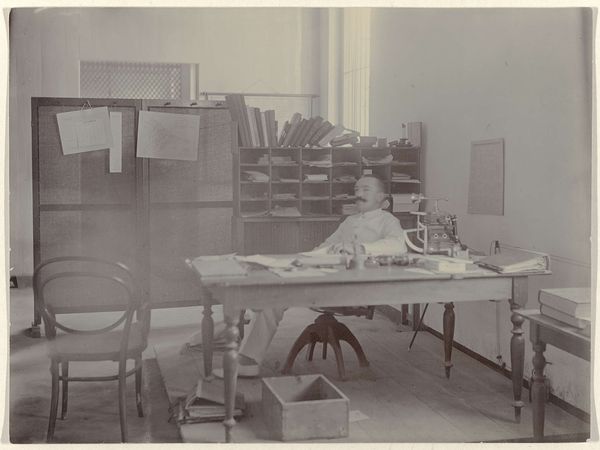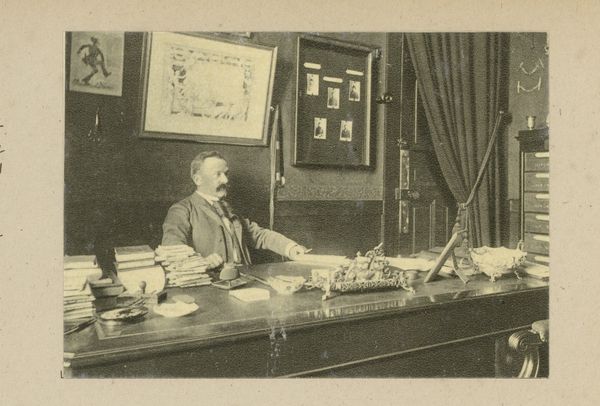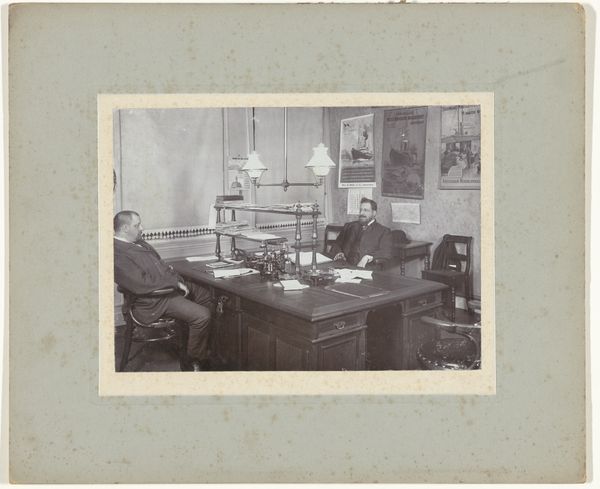
photography
#
photography
#
genre-painting
#
modernism
#
realism
Dimensions: height 170 mm, width 230 mm
Copyright: Rijks Museum: Open Domain
Curator: I see rows of men, almost clones, in shirts and ties. An office scene so perfectly rendered that it feels like a stage. Coldly formal and terribly silent somehow. Editor: What you're seeing is a photograph by Atelier Kurkdjian entitled "Bestelafdeeling," probably taken sometime between 1931 and 1934. What strikes you as so silent about it? Curator: I think it's the combination of all that relentless geometry, those rigid poses, and a world reduced to shades of grey. Even the light seems…processed, devoid of warmth. It’s realism bordering on abstraction, the individuals almost dissolving into an anonymous mass. Editor: This studio, based in the Dutch East Indies, chronicled colonial society and commercial ventures. I find it interesting how this genre scene, likely commissioned by the company itself, can still evoke such a stark feeling today. You see, this wasn't just documentary work, but deeply tied to shaping a public image of progress. Curator: Yes, progress. It's on full display! So, what does the name, “Bestelafdeeling” means in English? I'm hoping it adds more flavor. Editor: The name "Bestelafdeeling" translates from Dutch to "Order Department". The photograph then shows a bureaucratic machine in motion, each individual fitting neatly into a system of ordering, processing. Note how that very act—of ordering the world, the production process itself, translates visually to an image dominated by straight lines and contained shapes. Curator: It makes me reflect about people conforming with systems, and the loss of something of themselves... But it seems, even then, everyone has tried to mark the spot where their bodies would rest daily by adorning desks with stuff. The stacks of files speak volumes, you know? Editor: True. The materiality here hints at the very real labor involved and breaks any illusion of total harmony, as does the individuality in how papers were managed. These pictures are not so objective at all; that’s why it becomes fascinating and multilayered today! Curator: Exactly, something to remember: those files contain names, aspirations. Every one of those nameless men have real families and homes... I'm thinking it isn’t too late to hear those names. Thanks! Editor: It’s been insightful. Considering its commission origins while seeing through our subjective perspectives gives this colonial photograph new resonance.
Comments
No comments
Be the first to comment and join the conversation on the ultimate creative platform.

